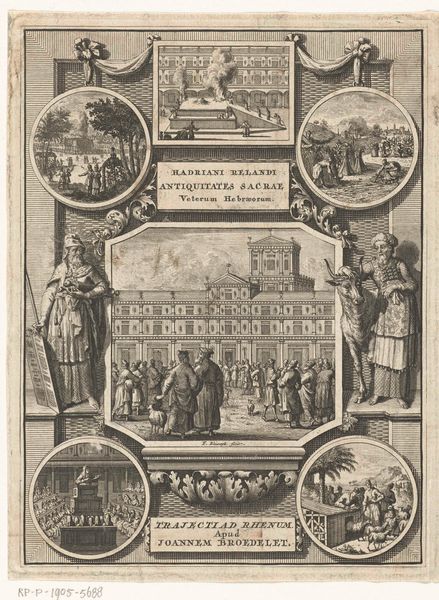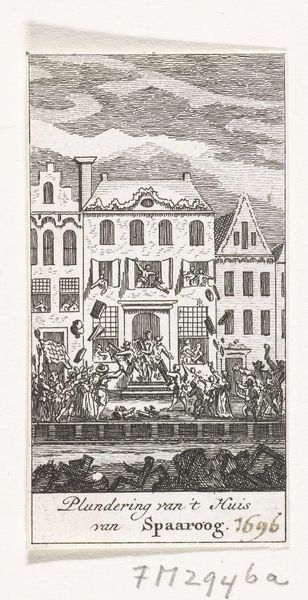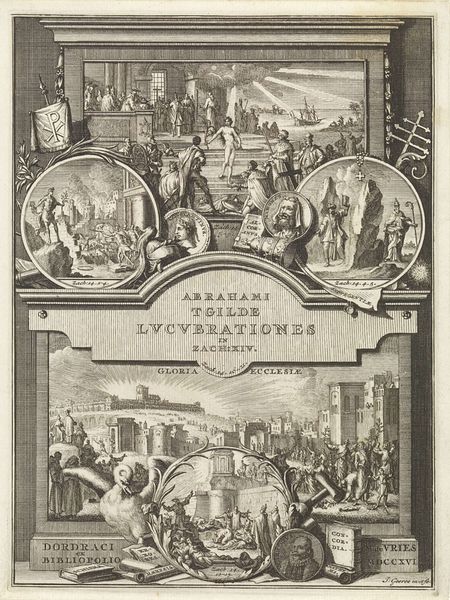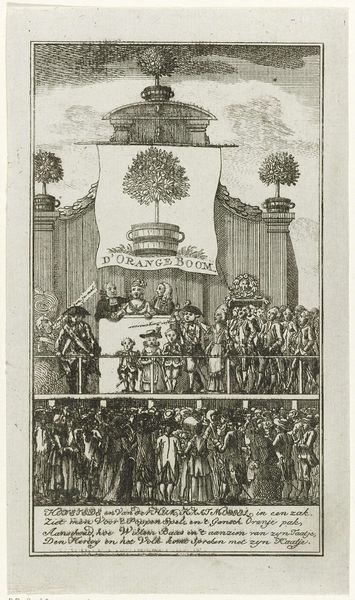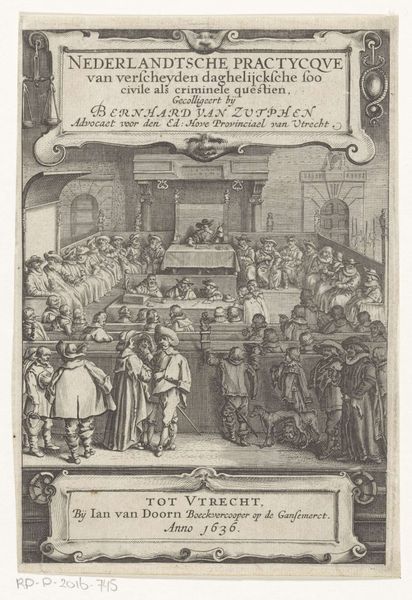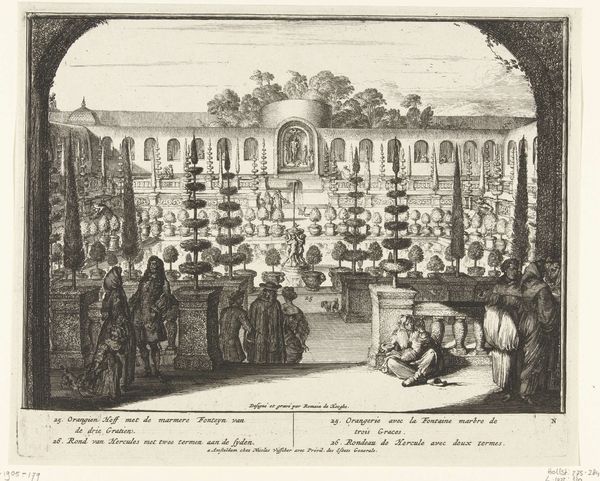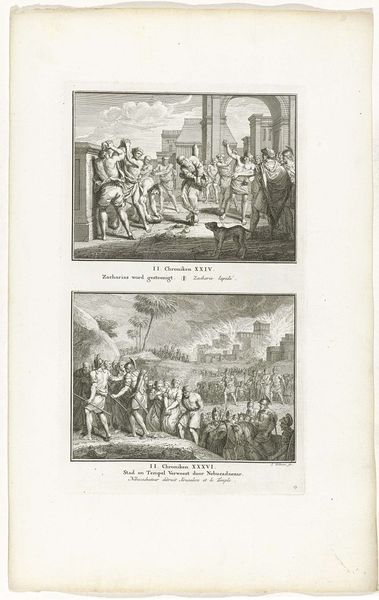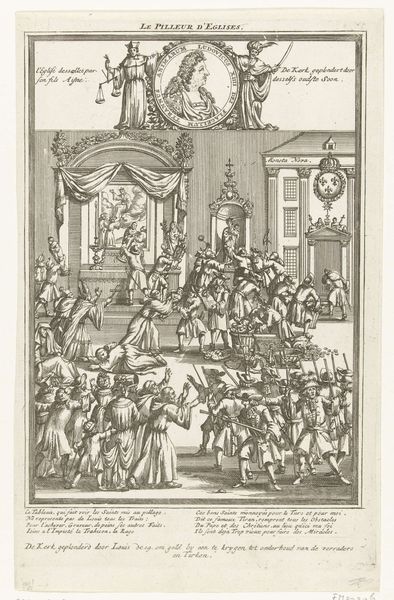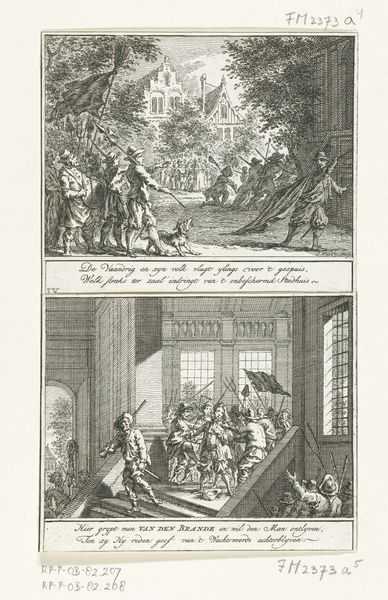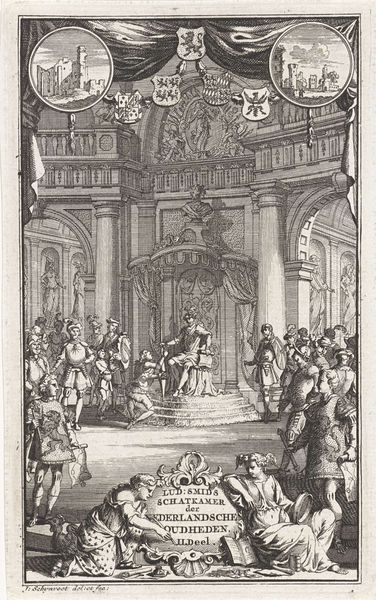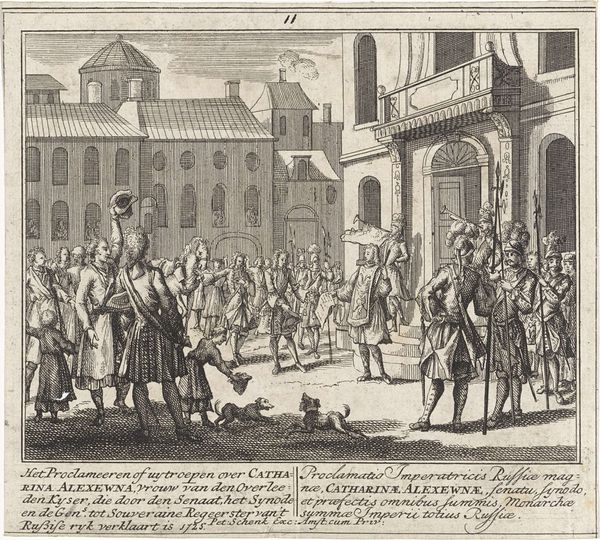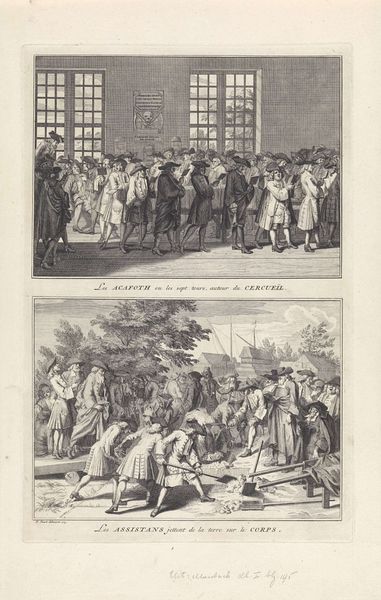
print, engraving
#
pen drawing
#
dutch-golden-age
# print
#
pen illustration
#
old engraving style
#
cityscape
#
history-painting
#
engraving
Dimensions: height 185 mm, width 109 mm
Copyright: Rijks Museum: Open Domain
Curator: Here we have "Herstel van de stadhouder, 1787," a print from the late 18th century whose author is, unfortunately, unknown. It resides here at the Rijksmuseum, a testament to a turbulent period in Dutch history. Editor: My initial impression is one of compartmentalized chaos. The image is broken into small scenes, each teeming with meticulously rendered figures and activity. The overall effect is dense, but the linework is delicate. Curator: Precisely. This engraving captures the restoration of the Stadholder, Prince William V, after a period of political unrest. Note how each scene reflects a different facet of the events surrounding this restoration, revealing underlying fractures within Dutch society. Editor: Yes, the composition, while formally organized, presents distinct emotional registers. The upper right scene, with its burning objects, evokes destruction and anger, starkly contrasting with the procession scene. It shows his entry back to The Hague, emphasizing the theatricality of power. The composition uses this juxtaposition to highlight the drama inherent to this historical moment. Curator: Consider how the engraving reinforces existing hierarchies, framing the Prince’s return as a triumphant, even divinely ordained event. The other scenes around it bolster that interpretation. It actively crafts a particular narrative. I would argue that such prints became essential tools for solidifying political control. Editor: Indeed, the artist uses the precise linework and detailed renderings of the figures and architecture not merely to record the event, but to invest it with an air of historical importance. Each line works together to serve that exact purpose, and to capture an historical feeling about the moment in time. Curator: Absolutely, while celebrating a particular victory, it also, inadvertently, highlights a polarized society. It acknowledges in glimpses the potential for dissent despite celebrating the restored power. Editor: Analyzing its lines and structure provides a powerful entry point into the historical and cultural complexities surrounding this event, though it clearly emphasizes only one side of things. Curator: This piece ultimately reveals the intrinsic relationship between art, power, and the crafting of historical narratives. The anonymous nature of its creator makes that influence even stronger.
Comments
No comments
Be the first to comment and join the conversation on the ultimate creative platform.
